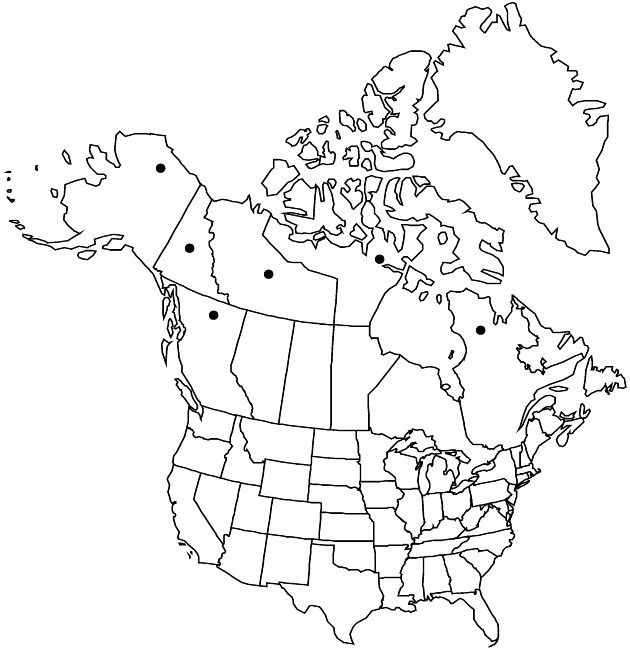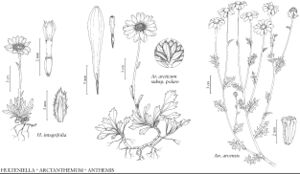Hulteniella integrifolia
in A. I. Tolmatchew, Fl. Arct. URSS 10: 118. 1987.
Common names: Entire-leaved daisy
Basionym: Chrysanthemum integrifolium Richardson
Synonyms: Arctanthemum integrifolium (Richardson) Tzvelev Dendranthema integrifolium (Richardson) Tzvelev Leucanthemum integrifolium (Richardson) de Candolle
Treatment appears in FNA Volume 19. Treatment on page 535.
Revision as of 15:16, 18 September 2019 by FNA>Volume Importer
Rhizomes 1–3 mm diam. Leaves: blades (2–)4–18(–30) × 0.8–1.2(–2) mm. Peduncular bracts 0–3, remote, distal (mostly beyond midstem), 4.5–7 mm, margins and apices brown, hyaline, erose, scarious. Phyllaries 5–8 × 2–3 mm. Ray laminae (4–)6–7 × 2–3.2 mm, with 2–5 hairs inside opening of tube. Disc corollas 2.5–3 mm, tubes greenish, lobes 0.35–0.5 mm, reflexed, tips brown and callous. Cypselae brown, 1.5–2 mm, ribs pale. 2n = 18.
Phenology: Flowering summer.
Habitat: Alpine zones, moist to mesic gravelly sites, arctic tundra, moist to well-drained, exposed areas with low organic content, on rock, gravel, sand, silt, clay, till, or moss, calcareous or not, seldom on sea beaches or areas exposed to salt spray
Elevation: 0–500+ m
Distribution

B.C., N.W.T., Nunavut, Que., Yukon, Alaska, e Asia (Russian Far East).
Discussion
Selected References
None.
Lower Taxa
None.
... more about "Hulteniella integrifolia"
Entire-leaved daisy +
Alpine zones, moist to mesic gravelly sites, arctic tundra, moist to well-drained, exposed areas with low organic content, on rock, gravel, sand, silt, clay, till, or moss, calcareous or not, seldom on sea beaches or areas exposed to salt spray +
Present +
in A. I. Tolmatchew, Fl. Arct. URSS +
1987 +
Hulteniella integrifolia +
Hulteniella +
species +
